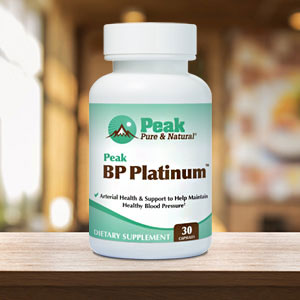Get Easy Health Digest™ in your inbox and don’t miss a thing when you subscribe today. Plus, get the free bonus report, Mother Nature’s Tips, Tricks and Remedies for Cholesterol, Blood Pressure & Blood Sugar as my way of saying welcome to the community!
6 ways to make your fresh produce last longer

It’s become a mantra for all of us who want to eat as healthy as possible: get plenty of fresh fruits and vegetables.
These foods are the best sources of many nutrients, but especially fiber — a powerhouse nutrient for digestive health.
And right now, so many are ripe for the picking.
The downside of buying all that fresh produce is that it doesn’t stay fresh for long. If you’re in a smaller household, using all those fresh fruits and veggies can be tough before they spoil.
So what’s a healthy eater to do? Here are some science-based tips for extending the lifespan of these health-promoting foods…
Check the quality
Keeping produce fresh starts when you’re shopping. First off, if you have access to a farmer’s market, shop there. It’s a great place to get fruits and vegetables that have been picked at the peak of quality.
Look for produce that’s brightly colored and intact. Make sure you avoid produce that’s bruised, nicked or damaged, as that can leave it open to microbe damage and cause it to spoil faster.
Buy only what you know you can use
Don’t buy too much produce. If you have a small household, you probably don’t need that five-pound bag of oranges or apples. Most of the time you can buy fruit and some vegetables by the piece to make it easier to consume it all before it rots.
If you do buy too much produce, you can often find a way to process it for storage. Pureeing, canning, blanching, vacuum sealing, freezing or fermenting can all give your produce longer life. And in the case of fermenting, it can even boost the health-giving properties of your produce.
Wash only when ready to use
It’s not necessary to wash your produce before you store it, since a lot of what we buy has already been washed. In fact, if you wash your produce and don’t dry it completely before storing it in the fridge, it can speed up decay.
However, you should wash your produce just before you use it to remove dirt and pathogens that can make you sick. Just use plain water — contrary to what social media would have you believe, adding vinegar or baking soda doesn’t make a difference in reducing microbes or removing pesticide residues.
Store fresh produce in the right place
There are three main storage options for produce: counter, fridge, and a cool, dry and dark place such as your pantry. Here is where you should store different types of produce:
- Cool, dark pantry or cupboard — This is the place to store bananas, onions, garlic, potatoes, sweet potatoes, squashes and whole pumpkins. One caveat: make sure you don’t store potatoes and onions together. Onions produce a gas called ethylene that makes potatoes spoil more quickly, and the high moisture content in potatoes makes onions spoil faster.
- Fridge — Store all leafy greens, carrots, cucumbers, cauliflower and broccoli in the crisper drawer in your fridge. Don’t store them in completely sealed bags, as this slows ripening while trapping carbon dioxide, leading to decay and bad odors. Keep them in perforated plastic bags to retain moisture but encourage airflow.
As for fruits, store apples, watermelons and citrus fruits such as oranges in the fridge’s crisper drawer to keep them fresh for longer. However, don’t store watermelon in the fridge for longer than three days because it will lose its color and flavor.
- Counter — Most herbs and some leafy vegetables like celery, spring onions and asparagus can be kept on the counter away from direct sunlight. Just make sure you place their stems in water to keep them crisp.
Reduce waste by tracking purchase
Make sure you arrange your fridge and pantry so you can see your produce easily and use it all before it spoils. I like to put my greens in a perforated bag with the date of purchase written on it so I know how soon I need to eat them. Or you can keep a list on your fridge or on a whiteboard in the kitchen so you know exactly what you bought and when.
But how do you know how many days your fruits and vegetables have left? Sites like stilltasty.com can help with that. Just enter the name of your produce and it will tell you how many days it’s good for depending on how it’s stored.
Hopefully, these tips will inspire you to eat fresh fruits and vegetables more often. But if you still find your crisper drawer is collecting wilted greens and soggy fruit you just can get to fast enough, frozen fruits and vegetables, as well as dried powder mixes, are healthy options (check labels to avoid added sugars). And when reaching for made with “real fruit” snacks, follow this guide I put together recently.
Editor’s note: There are perfectly safe and natural ways to decrease your risk of blood clots including the 25-cent vitamin, the nutrient that acts as a natural blood thinner and the powerful herb that helps clear plaque. To discover these and other secrets of long-lived hearts, click here for Hushed Up Natural Heart Cures and Common Misconceptions of Popular Heart Treatments!
Source:
1. Keep Your Fruit And Veg Fresher For Longer With These Science-Backed Hacks — Science Alert















